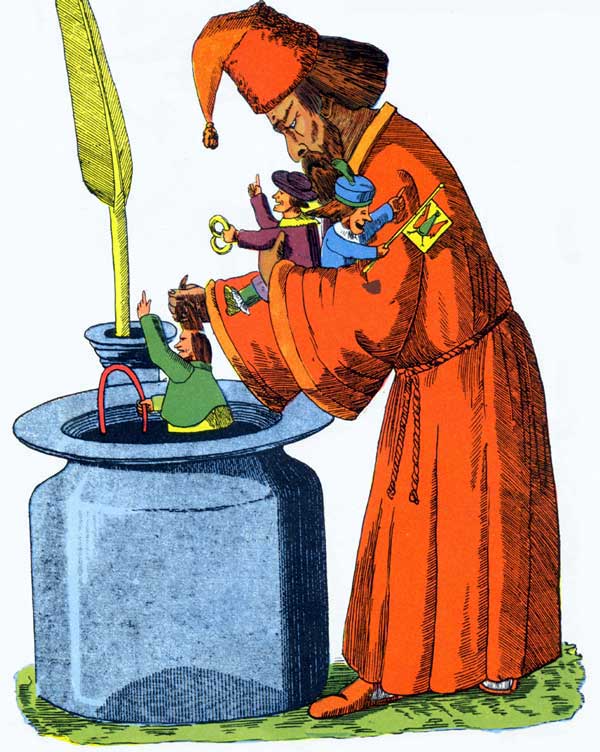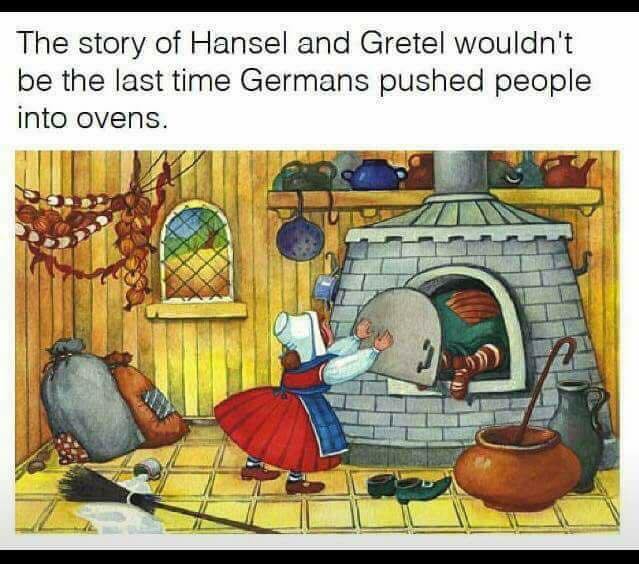Tbh, it’s not a fairy tale but an illustrated children’s book written in 1845 by Heinrich Hoffman for his three year old kid. It was one of the first illustrated books, so it is considered to be one of the first comic books. Each story has a morale but is way over the top.
Interestingly a lot of the descibed behavior is known to be with ADHD or anorexia, today.
Growing up in Germany I always find Struwelpeter a quite horrible book (yes, I too had it a kid).
I guess it’s also kinda “woke” by today’s standards, because there’s a story in which a couple of boys make fun of a black kid and get punished by a giant wizard who dips them in ink so they’re black, too.

That one’s awful because their “punishment” is to be made black, making the moral more like, “Don’t make fun of the poor wretch that was born that way.”
I don’t know. It’s punishing with something they themselves think of as a bad thing, not necessarily their judge. It’s not uncommon to punish with the very thing someone hates or what is related to the crime (community service for behaving asocial, for example)
Curting off a hand for stealing! (Are we still doing this?)
Struwelpeter was kinda gruesome.

Edit: Source
Ah yes, homemade Christmas presents, WCGW?
Congratulations to OP’s new life as a bratwurst.
The vast majority of the original versions of fairy tales are gruesome. It’s not the author, but the time they were written down/spoken/shown that matters.
Yet somehow, people still can’t seem to understand how Nazis happened.

Since the witch was shoved in there by the kids to prevent her from cooking and eating them rather than to try and cleanse the world of witches, I’d say it wasn’t fairy tales’ fault. Something like Der Giftpilz would be more to blame.
And I would say Mein Kampf is more to blame
Both can be to blame.
Don’t make me get out my giant pair of scissors! I’m not just going to cut off your thumbs!
Nice. Schubert was Austrian but I think it counts.
Also, it just occurred to me that Rammstein’s “Dalai Lama” is an adaptation of the same story (originally a poem by J.W. Goethe).
Schubert was quite the musical gangster BTW. He wrote the Erlkönig at 18, and despite only living to 31, he composed some 1,500 works and managed to gain enough fame to be buried next to Beethoven. His Mass No. 2 in G Major is one of my favorite pieces. It’s short and sweet (only 22 minutes) but full of bravura, dramatic soli, and the Credo has a violin riff that wouldn’t feel out of place in a heavy metal show.
thanks, saving those for after work
Hope you enjoyed
Nice. Literally the same story.
English lyrics for those who can’t German.
German fairy tales are good for soothing children traumatized by Irish fairy tales.
Damn, that shit fire. I mean, diese Scheisse ist Feuer.
The underlying thematic elements of fairytales, as evident in Tolkien’s and Lewis’s works, contribute to ideas about the nature of human will, which can overcome obstacles via its intrinsically good, innocent and resilient nature. That’s the portrayal of the ideal human will.
It’s also why you often see fairly tales across cultures carrying some message of hope and optimism, regardless of how they “end”.
But actually, in essence a fairy tale never ends because those who read it or hear are supposed to be changed by having done so, and they carry what they take from it with them. Here is where you often get a connection between fairy tales, folk tales, traditions and cultural myths.
You know this image is from something fictional because the cats appear to give a shit that she’s burning.







